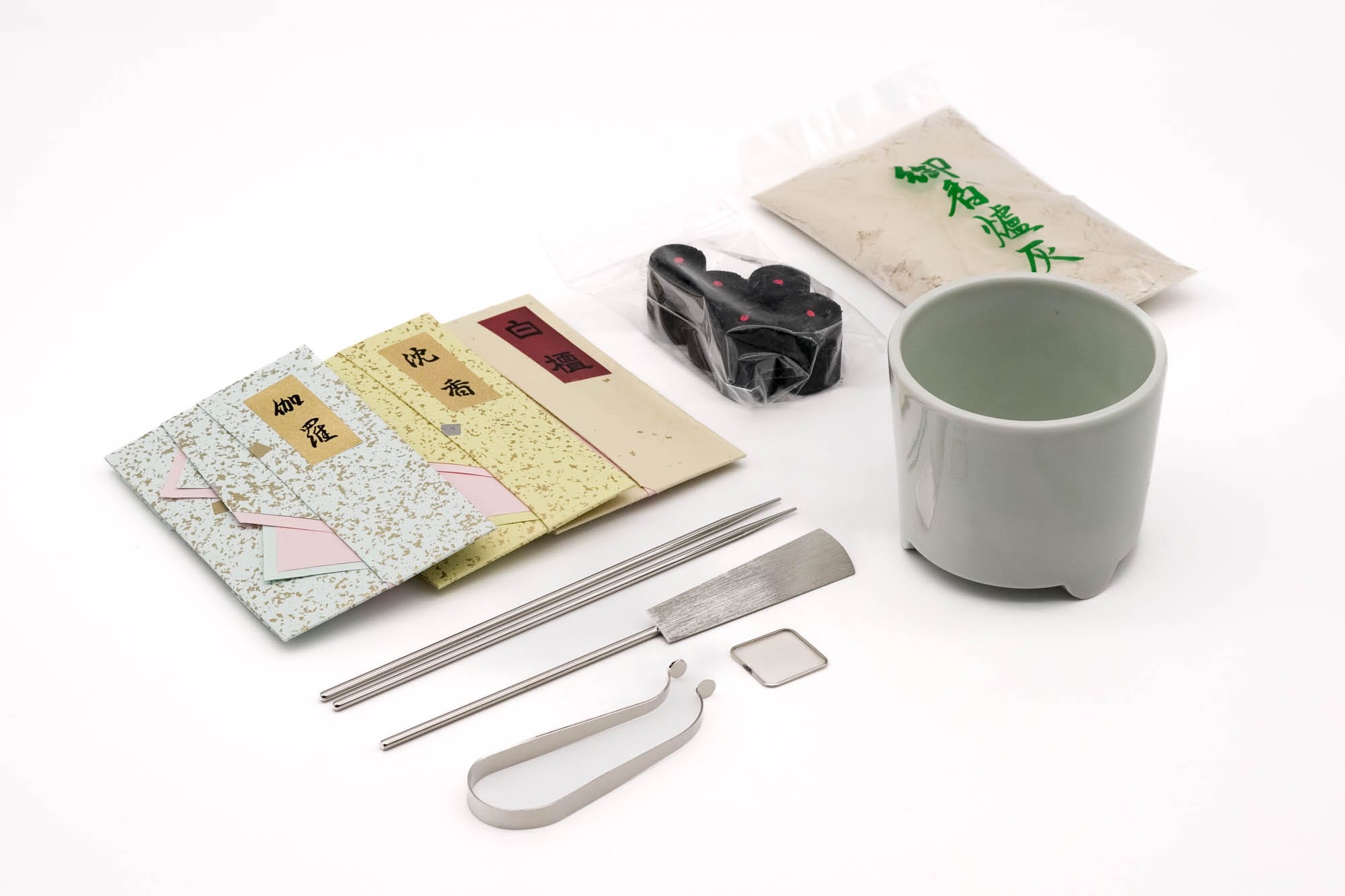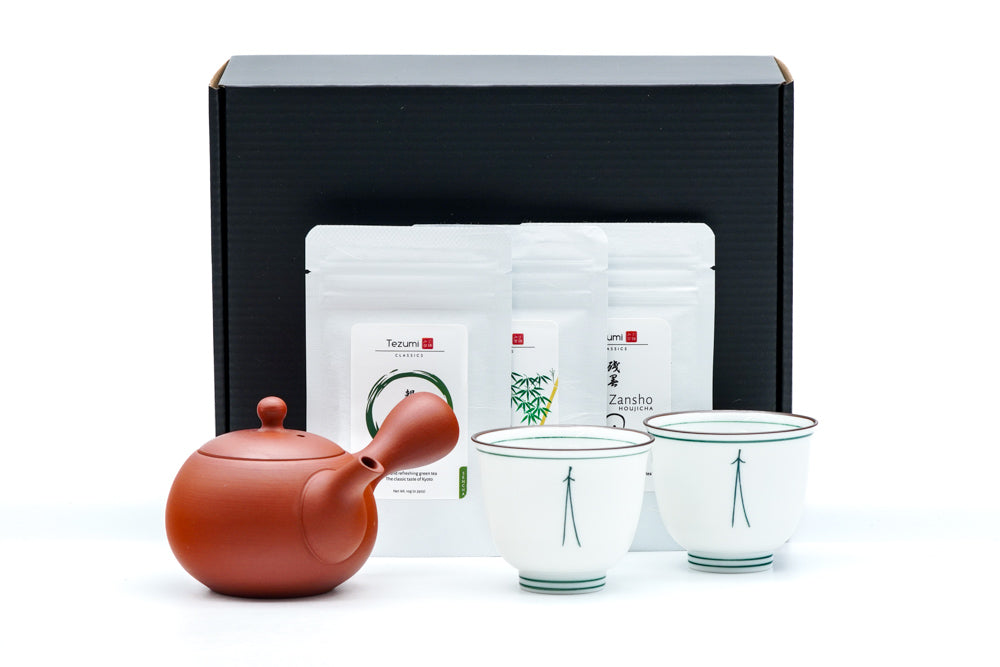Mastering Sencha Brewing: Temperature
Japanese green teas, such as sencha and gyokuro, have a reputation for being finicky and difficult to brew properly. However, once you’ve mastered the basic brewing techniques, you can use these teas’ high sensitivity to minute changes in parameters to control different flavours and aspects of the resulting infusion.
The three main brewing parameters–leaf/water ratio, temperature, and infusion time–each have their unique effect on flavour extraction and work together in tandem to brew the desired cup. Here, we’ll take a look at one of these variables, temperature, and its effect on taste, aroma, and flavour.

Taste Compounds
As you may have read from our posts on tea’s taste compounds or the science of tea shading, the three major compounds that impact the overall taste profile of Japanese green teas are amino acids, catechins, and caffeine. In short:
- Amino acids: sweet and umami taste
- Catechins: bitter and astringent taste
- Caffeine: bitter taste, but not as strong as catechins
Catechins

Catechins are very sensitive to temperature and are extracted much more easily at higher temperatures. As you can see, there is a larger jump in extraction from 70°C to 90°C than from 50°C to 70°C, especially for shorter infusions.
It is also worth noting that all three of these lines continue to rise as brew time increases, with the 70°C and 90°C brews actually showing an acceleration of extraction after 90s.
Caffeine

While caffeine also extracts faster at hotter temperatures, the relationship is more or less linear, without a huge jump in extraction for the 90°C brew.
These lines also begin to level off for longer infusions, showing a decrease in extraction rate over time. Caffeine exists in lower concentrations in tea than catechins, hence the lower overall amount extracted.
Amino Acids

Amino acids extract relatively readily at all temperatures, with a more or less linear relationship, similar to caffeine. Also similar is the decrease in extraction rate, especially after 90s, as shown by the leveling off of the curves.
Amino Acid/Catechin Ratio

By comparing the concentration of amino acids to catechins, we can get a good sense of the umami-to-bitter ratio in the taste of the tea. In this graph, the ratio of amino acids to catechins is plotted on the vertical axis - the higher the number, the greater the amino acid to catechin ratio and thus the more umami and less bitter the taste.
As you can see, for this tea, this ratio is highest for short infusions at 70°C and long infusions at 50°C. The downward slope of the lines after 60s shows when the rate of catechin extraction is greater than that of amino acids, and so the brew becomes less umami.
It is worth noting that this graph only shows the ratio of compounds, not the overall concentration, so the strength of the cup of tea is not represented, only the taste balance.
Conclusions
A clear takeaway illustrated by the first three graphs is that to achieve the same strength (concentration) at a lower brew temperature, you have to brew for longer, and vice versa.
The fourth graph shows how temperature can be used as a tool to selectively extract more of one taste compound than another.
Aromatic Compounds
While these graphs show that the best way to extract the most umami from sencha is to either do short hotter infusions or long cooler infusions, this is only part of the puzzle. In addition to these three basic taste compounds, there are countless aromatic compounds that give each cultivar and tea its unique flavour. As can be seen in the graph below, almost all of the volatile compounds show an increase in concentration at higher brew temperatures. While this data comes from an analysis² of the headspace above an infusion of Chinese green tea, the chemistry is the same.

Notably, linalool, geraniol, and β-ionone show a drastic increase in concentration at higher brew temperatures. These compounds are responsible for various fresh and floral aromas in teas. Concentration of cis-3-hexenol, which is one of the fresh, green smelling compounds, levels off above 80°C.
Interestingly, the somewhat fruity hexanal (which should not be confused with cis-3-hexenal, another green smelling compound), shows an inverse relationship with temperature.
To learn more about the compounds responsible for the aromas of Japanese green teas, see our blog post How Tea Gets its Flavour.
So how can you apply all this science to your cup of sencha?
Each sencha is different and each person’s tastes are different. Understanding both can help you brew each tea to its fullest potential and tailor it to your preferences.
Generally, we recommend brewing the first infusion at around 70-80°C for 60s, which we’ve found provides a great balance between strength, structure, aroma, and umami. While this works very well for most senchas, you can use this as a starting point if you feel like experimenting or adjusting further.
For a softer, umami-rich brew
If you prefer a very round brew with a focus on sweetness and umami, try reducing the temperature to 50-60°C and increasing the brew time to 70-90s. The relatively lower catechin levels mellow out the bright notes while the increased ratio of amino acids boosts the umami and body.
This style of longer, cooler infusions is great for bringing out the richer umami of shaded sencha, such as many Kyoto-style senchas. A perfect example to try this with is our Uji Okumidori sencha.
Pushing this even further brings us to kabusecha and gyokuro brewing styles, such as 40-50°C for 120-150s. This is usually paired with a higher tea to water ratio for an even more intensely umami brew. Specialised teaware such as houhin and shiboridashi are designed for brewing in this style.
A more extreme variation is mizudashi (水出し) or cold-brewing. Here the temperature is room-temperature or colder, and the infusion time is 10 minutes to multiple hours. Even more extreme is kooridashi (氷出し) or ice-brewing, which uses either ice cubes or ice-water.
For a brighter, aromatic brew
If you prefer a more structured, refreshing, and aromatic infusion, try moving in the other direction, using hotter water and slightly shorter infusion times. The higher temperature helps extract more aromatic compounds and the slightly higher relative concentration of catechins gives the tea a crisp, structured, and refreshing taste.
We recommend trying this style of brewing with more naturally grown senchas, high-elevation senchas, or with teas made from uniquely aromatic cultivars such as koushun or Shizu-7132. Great teas to try this with are our Ao-sora and organic Tatsuyama senchas.
Tweaking Strength
If you’ve found the perfect flavour balance, but the tea is either too strong or too weak, keep the time and temperature the same and just change the leaf-to-water ratio: more tea/less water for a stronger cup, less tea/more water for a weaker cup.
A note on fukamushi senchas
While these specific parameters are designed around orthodox senchas (light-to-medium steams), the general concepts can also be applied to deep-steamed teas. Just note that these will extract faster because of their smaller leaf size, so brewing times should be shortened to 50-75% to adjust accordingly.
These concepts can also work for non green teas and non Japanese teas, but that’s beyond the scope of this post :).
To learn more about Japanese tea and teaware, check our other guides.
________________________________________________________________
References:
1. Muneyuki Nakagawa; Regarding the Taste of Tea, Chanoyu and Science p.236 Tankosha (2000)
2. Lau, Hazel et al. “Characterising volatiles in tea (Camellia sinensis). Part I: Comparison of headspace-solid phase microextraction and solvent assisted flavour evaporation.” LWT (2018)




















